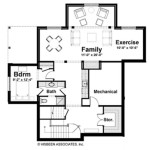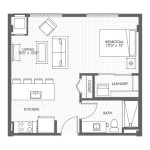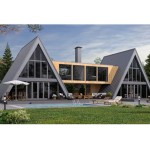Exploring the Benefits of House Plan Searching in Japanese Culture
House plan searching, the process of researching and selecting architectural drawings for residential construction, holds unique significance within Japanese culture. The conceptualization and design of a home extend beyond mere shelter; it's deeply intertwined with philosophical principles, aesthetic values, and practical considerations shaped by centuries of tradition. Understanding the benefits of meticulously engaging in house plan searching within this context reveals how it contributes to creating dwellings that embody harmony, functionality, and cultural identity.
The approach to home building in Japan often emphasizes creating a space that integrates seamlessly with its natural surroundings. This principle, deeply rooted in Shinto and Zen philosophies, influences the selection of materials, the orientation of the building, and the incorporation of garden elements. Therefore, house plan searching is not simply about finding a pre-designed template; it involves a deliberate exploration of options that allow for customization and adaptation to specific site conditions and personal preferences while honoring established cultural norms related to residential design.
Furthermore, Japanese architecture places a strong emphasis on efficient use of space, a necessity given the relatively high population density and limited land availability. This focus on spatial efficiency translates into thoughtful floor plans that maximize functionality without compromising on aesthetics. House plan searching, in this context, becomes an exercise in discerning the designs that best exemplify these principles, optimizing living areas for specific activities and ensuring a comfortable and practical living environment.
Preserving and Adapting Traditional Design Elements
One of the key benefits of house plan searching in Japanese culture is the opportunity to preserve and adapt traditional design elements for modern living. While contemporary construction techniques and materials are widely adopted, many homeowners still seek to incorporate features that reflect their heritage. This might include elements such as tatami mats, shoji screens, engawa (verandas), and tokonoma (alcoves). These features are not merely decorative; they serve specific functional and symbolic purposes.
Tatami mats, for instance, are not just flooring material; they define the dimensions of a room and contribute to the overall sense of tranquility and order. Shoji screens offer flexible space division and allow for diffused natural light, creating a soft and inviting ambiance. Engawa provide a transitional space between the interior and exterior, fostering a connection with nature. The tokonoma serves as a focal point for displaying art and seasonal decorations, reflecting the family's aesthetic sensibilities and cultural values.
House plan searching allows individuals to explore how these traditional elements can be seamlessly integrated into contemporary home designs. Architects and designers often offer variations that maintain the essence of these features while adapting them to modern lifestyles and building codes. This process ensures that the new home reflects both the family's cultural heritage and their current needs.
The selection of materials also plays a crucial role in preserving cultural identity. Traditional Japanese homes often feature natural materials such as wood, bamboo, and paper. While modern alternatives may be available, many homeowners prefer to use authentic materials to create a sense of authenticity and connection to the past. House plan searching provides the opportunity to consider the sourcing and application of these materials, ensuring that they are used responsibly and sustainably.
Optimizing Space and Functionality for Contemporary Lifestyles
Beyond preserving tradition, house plan searching in Japanese culture focuses heavily on optimizing space and functionality for contemporary lifestyles. Modern Japanese families often have different needs and expectations compared to previous generations. Smaller family sizes, increased urbanization, and evolving work patterns all influence the design requirements of a modern home.
House plan searching allows potential homeowners to explore layouts that cater to these changing needs. This might involve incorporating open-plan living spaces, creating flexible rooms that can adapt to different activities, and designing efficient storage solutions to minimize clutter. The principles of minimalist design, deeply ingrained in Japanese aesthetics, often guide these decisions.
The concept of "Ma," which refers to the intentional use of empty space, is particularly relevant in this context. "Ma" is not simply about leaving areas vacant; it's about creating a sense of balance and harmony by carefully considering the relationship between objects and the space around them. House plan searching allows individuals to explore how "Ma" can be incorporated into their homes, creating a sense of spaciousness and tranquility even in smaller living areas.
Furthermore, modern technology plays an increasingly important role in Japanese homes. House plan searching provides the opportunity to integrate smart home features, energy-efficient appliances, and advanced security systems seamlessly into the design. This ensures that the home is not only aesthetically pleasing but also functional and sustainable.
Consideration of accessibility is also a critical aspect of optimizing space and functionality. With an aging population, there is growing emphasis on designing homes that are accessible to individuals of all ages and abilities. House plan searching allows potential homeowners to explore designs that incorporate features such as ramps, grab bars, and wider doorways, ensuring that the home is comfortable and safe for everyone.
Facilitating Harmonious Integration with the Natural Environment
Perhaps the most significant benefit of house plan searching in Japanese culture is its role in facilitating harmonious integration with the natural environment. The concept of "Satoyama," which refers to the interface between inhabited areas and the surrounding mountains or woodlands, deeply influences residential design in Japan. Homes are often designed to blend seamlessly with their natural surroundings, blurring the boundaries between indoor and outdoor spaces.
House plan searching allows potential homeowners to explore designs that maximize natural light, ventilation, and views. This might involve incorporating large windows, skylights, and courtyards to bring the outdoors in. The orientation of the building is carefully considered to take advantage of sunlight and prevailing winds, minimizing the need for artificial lighting and air conditioning.
The incorporation of garden elements is also an essential aspect of creating a harmonious living environment. Japanese gardens are not merely decorative; they are carefully designed to reflect the principles of Zen philosophy, creating a sense of tranquility and contemplation. House plan searching allows individuals to explore how gardens can be integrated into their homes, creating a seamless transition between the interior and exterior spaces.
The selection of plants and materials for the garden is also carefully considered. Native plants are often preferred, as they are well-suited to the local climate and require less maintenance. Natural materials such as stone, wood, and bamboo are used to create a sense of authenticity and connection to the natural environment.
Sustainability is also a key consideration when designing a home that integrates harmoniously with the natural environment. House plan searching allows potential homeowners to explore designs that incorporate energy-efficient features, water-saving technologies, and sustainable building materials. This ensures that the home has a minimal impact on the environment.
By thoughtfully engaging in house plan searching, individuals in Japanese culture can create homes that are not only aesthetically pleasing and functional but also deeply connected to their cultural heritage and the natural environment. The process becomes a deliberate act of shaping a living space that reflects their values, aspirations, and a profound understanding of the principles that underpin Japanese aesthetics and philosophy. The result is a dwelling that provides shelter, comfort, and a sense of belonging, harmoniously integrated with the world around it.

Modern Japanese Houses And Architecture Wallpaper

Modern Japanese Houses And Architecture Wallpaper

The Ultimate Guide To A Modern Japanese Home Edward George

The Ultimate Guide To A Modern Japanese Home Edward George

The Ultimate Guide To A Modern Japanese Home Edward George

Modern Japanese Houses And Architecture Wallpaper

Modern Japanese Houses And Architecture Wallpaper

Share House Tokyo Live With Japanese In Japan Borderless

The Ultimate Guide To A Modern Japanese Home Edward George

Modern Japanese Houses And Architecture Wallpaper
Related Posts








